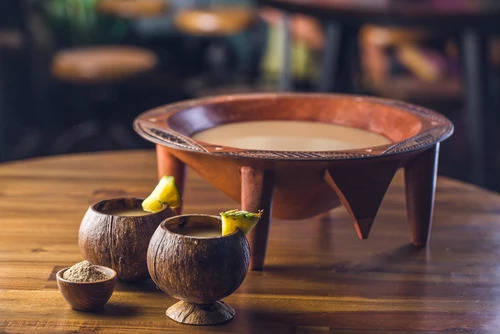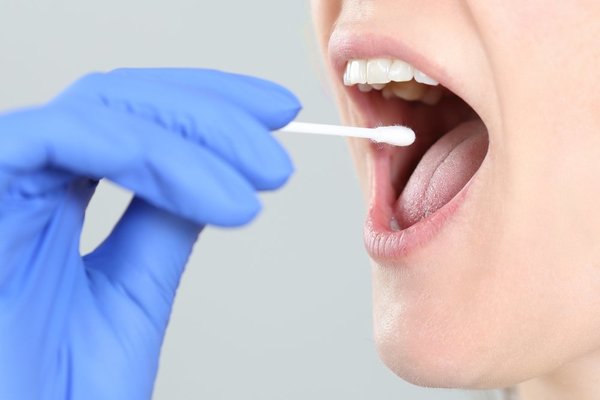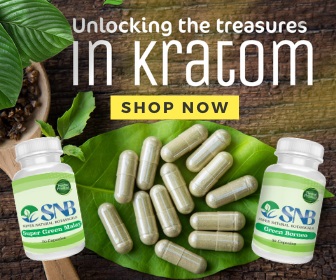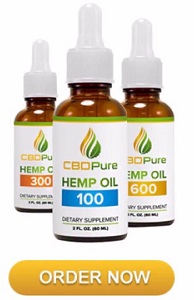Kava (Piper methysticum) is a word of Tongan language, which means “bitter.” Roots of this plant are commonly used by the people of South Pacific Island where this tall shrub grows to make kava tea. It is traditionally being used for its entheogenic nature for centuries, in spiritual and custom ceremonies.
Tremendous psychological and physiological effects of Kava on anxiety and restlessness have been widely studied in the past few decades.
These effects are believed to be produced by Kavalactones, the active constituent of kava. Researchers uncovered its beneficial effects in alleviating Cancers, Tobacco Smoking, Analgesia (Pain), Depression, Menopausal Symptoms, and Insomnia.
It has gained remarkable acceptance in the West, owing to its copious health benefits. Kava is even being sold as dietary supplements and in anxiety disorders, as alternative medicine. By dint of its sedative and euphoric properties, it holds the status of an inebriant beverage in some cultures.
The very first emergence of kava in Australia, around 1980s, came as an alcohol substitute, as it elicits the same relaxing and stress-relieving effects as alcohol with minimal side-effects.
However, its probability of inducing liver damage makes it a bit risky to use Kava tea on an ongoing basis. The exact culprit involved in hepatotoxicity is still unknown.
Here are the key Kava facts that you need to know before getting started with this drink.
1. Kava Is A Popular Social Drink, Similar To Alcohol
Kava, the psychoactive drug has traditionally been used as a recreational beverage in religious ceremonies since thousands of years.
The conventional preparation is a filtered mixture of water with rhizomes and roots of kava.
Though the active ingredients of kava are not related to alcohol or morphine and are from kava lactone family, it generates similar effects on its consumer as alcohol does.
A mild muscle-relaxant, calming, euphoric, hypnotic, narcotic, and diuretic properties of kava place itself as a safe substitute of alcohol.
2. Kava Serves As A Natural Alternative To Widely Used Drugs Like Xanax And Ativan
Broadly prescribed anti-anxiety drugs Xanax, and Ativan belonging to the class benzodiazepine are the drugs of choice in anxiety disorders.
However, their strong abuse potential has been putting them under attention since the past decade.
The escalating possibility of drug abuse developed a dire need to find a safe alternative to drugs like these.
Extensive researches on Kava have proved that it quashes anxiety by following the same mechanism of action as benzodiazepines. It increases GABA by activating GABA-A receptors, which in turn inhibit neurons and produce a calming and soothing effect.
3. The Purported Health Benefits Are Remarkable
Widely used in the treatment of anxiety as the effects of kavalactones on the limbic system are calming and relaxing. Kavalactones activate GABA-A receptors in the same way as BZD does and kills the symptoms of anxiety.
One more advantage of kava is that it is not addictive like other anxiolytics, thus can be used without developing a dependency.
Kava constituent Flavokavain is proved to stop the progression of cancer cells in various kinds of cancers. Flavokavain A helps suppress tumor growth in the breast by halting glucose transportation to the cancer cells and stopping their migration.
In bladder, flavokavain A promotes cell death by activating killing pathways and inhibiting those that retard cell death.
While “Flavokavain B,” aids cell death in colon and prostate tumors.
Kava has significantly been studied for its sedative properties since the last decade. The calming effect produced by kavalactones promotes sound sleep without disturbing the REM sleep. A study conducted with stressful insomniac subjects advocates the use of kava extract in treating stress-induced insomnia.
Other distinct benefits of kava encompass the possible improvement in
Drug addiction– kava serves as an anti-craving agent to help withdraw substance abuse and other forms of addiction.
Pain– kava’s muscle-relaxing properties help reduce chronic pain.
Epileptic seizures– kava is shown to have increased seizure threshold, suppressed motor activity and produced synergistic anticonvulsant effects when given with diazepam (an anticonvulsant)
Brain function– kavalactone activates brain processes by activating GABA receptors in the hippocampus, amygdala, and caudate nucleus).
Howbeit, long term consumption may hinder motor functions.
Depression– relaxing nature of kavalactone helps reduce mild depression.
Menopausal symptoms– anxiety, depression, hot flashes, insomnia are the symptoms of perimenopause or menopause, that kava helps eliminate.
Miscellaneous– reduces inflammation, boosts the immune system.
4. Kava Doesn’t Get You High Like Alcohol
Bearing in mind, the striking relatedness of kava to alcohol, people may often question that if it makes the person high. It does produce a relaxing and calming effect as alcohol and benzodiazepine do; however, the impacts are not that intense.
So, it can be said that it might cause a tingling and numbing effect by the effect of kavalactones but does not really make you high.
5. Kavalactones, The Most Active Constituent Of Kava
The pharmacological activity of kava extract is supposed to be attributed to its most active lipophilic constituent kavalactone (or kavapyrone).
The roots, stems of roots and rhizomes are rich in kavalactone, and its distribution reduces with going up in the aerial parts of the plant.
Eighteen of the kavalactones have yet been discovered, including the most active six constituents (kavain, yangonin, dihydrokavain, dihydromethysticin, demethoxyyangonin, and methysticin), that are believed to be responsible for about 96% of its activity.
Other constituents involve chalcones (flavokavains A, B, and C), calcium, sodium, aluminum, and amino acids.
6. It Is Entirely Legal In The U.S, But FDA Concerns Remains High
Despite above 100 reported cases of liver toxicity, kava is freely marketed and sold as a relaxing, calming, sleep-inducing agent, and dietary supplement all around the U.S. FDA in 2002 warned the kava consumers about its hepatotoxic potentials. It is since banned in some countries including, Germany, Canada, UK, and Switzerland.
7. There Are Many Potential Risks Of Kava
Besides all those surprising health benefits of kava, there are few dangerous effects too. The risk probability should be kept in mind while using kava in high doses or for long term. The most common and hazardous impact is on the liver.
According to Web MD, kava consumption for even one to three months has shown to have damaged liver resulting in liver transplant and even death.
It is advised not to take kava while pregnant or lactating, as its lipophilic nature makes it cross the placenta and breast milk.
Albeit the neurological effects of kava are yet to be explored to its fullest, its consumption in neurological disorders would probably be a bad call. It is not recommended to be used in the patients of schizophrenia, clinical depression, bipolar disorder, and especially Parkinson’s disease, as it can cause potential worsening to the symptoms.
Another side effect may include, yellowing of eyes and nose (see the doctor immediately), nausea, drowsiness, impaired judgment, loss of appetite, and allergic reactions.
8. Kava Is Available In Many Different Forms
Traditionally, people would take the roots and chew them up or convert it into a pulp, adding water or coconut milk to make a brew. The same can be done with kava powder by putting it in a muslin cloth, which is soaked in water and strained later.
Commercially, it is available in tablet, capsule, powder, tinctures, and tea forms.
9. Dosage Depends On Kavalactones Percentage Or Milligrams In A Supplement
The exact dose of kava is challenging to be suggested as its safe consumption depends on the indication it is used for, its dosage form and specific chemotype.
A specific chemotype defines the type of kava, based on different percentages of kavalactones in it. It helps recognize the strongest to mildest kava type. More the kavalactone percentage, stronger will be the kava type.
Kava is sometimes taken in the form of tea as single dosage at night, while kava supplements may be taken throughout the day.
Although clear guidelines for kava dosage is yet to be established, it is however advised to not exceed its consumption above 250 milligrams per day strictly not for more than three months.
10. Kava Is Safe And Non-Habit Forming
Kava is considered to be a relatively safe treatment for various medical conditions, including generalized anxiety disorder; a review study vindicates the safety profile of kava consumption under suggested doses.
Nevertheless, WHO demonstrates that kavalactone induced hepatotoxicity is infrequent. Liver damage is thought to be caused more often by other underlying diseases, drug interaction, excessive intake of alcohol, overdosing, existing liver diseases, or kava extracts made with alcoholic solvents like acetone or ethanol.
WHO further emphasized on utilizing aqueous solutions to make kava drinks, as it is hepatoprotective as compared to those made with acetone and ethanol.
11. Kava Shouldn’t Be Mixed With Prescription Drugs
Be sure you are not on any sedatives, other over-the-counter sleep aids, antidepressants, anxiolytics like benzodiazepines, Diuretics like furosemide, Blood thinners like warfarin or clopidogrel, antacids like omeprazole, antipsychotics, and other drugs or supplements while taking kava.
As kava interacts with most medications, either by synergistically augmenting their effects or by inhibiting the effects of the drugs by competing for CYTP450 enzyme, that is a significant group of metabolizing enzymes.
Kava extract and most of the drugs are metabolized by cytochrome P450 enzyme system; thus, the simultaneous consumption may result in reduced or no effect of any.
12. Avoid Driving When Enjoying Kava
Kava reduces the reaction time by 40% when compared to placebo and impairs psychomotor functions significantly when substantial doses are consumed.
Motor skill-based tasks should be avoided entirely, especially driving and operating heavy machinery to evade any possible mishap.
13. Consumers Should Research The Kava Products Before Buying
As mentioned above, different chemotypes denote varying percentages of kavalactone in any specific kava product, so their subsequent potency can then be predicted.
Dietary supplements, including kava, are widely used in the U.S without any particular regulations, holding the manufacturers responsible for acknowledging consumers with the right facts.
Unfortunately, not many manufacturers practice ethics and put consumers’ health on stake.
Here comes the responsibility of a well-aware consumer, who does not believe in the beneficial health claims made by random manufacturers.
Benefits and quality of kava vary with different brands, be sure you are picking up the one you trust the most of the ones that come under “certified organic” category of U.S department of agriculture (USDA).
Rate This Article
[ratings]
















